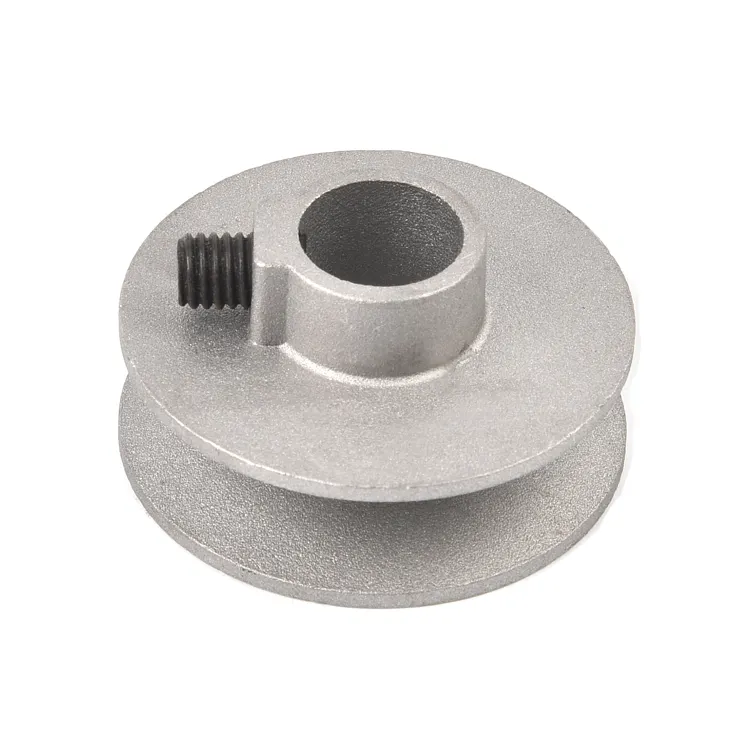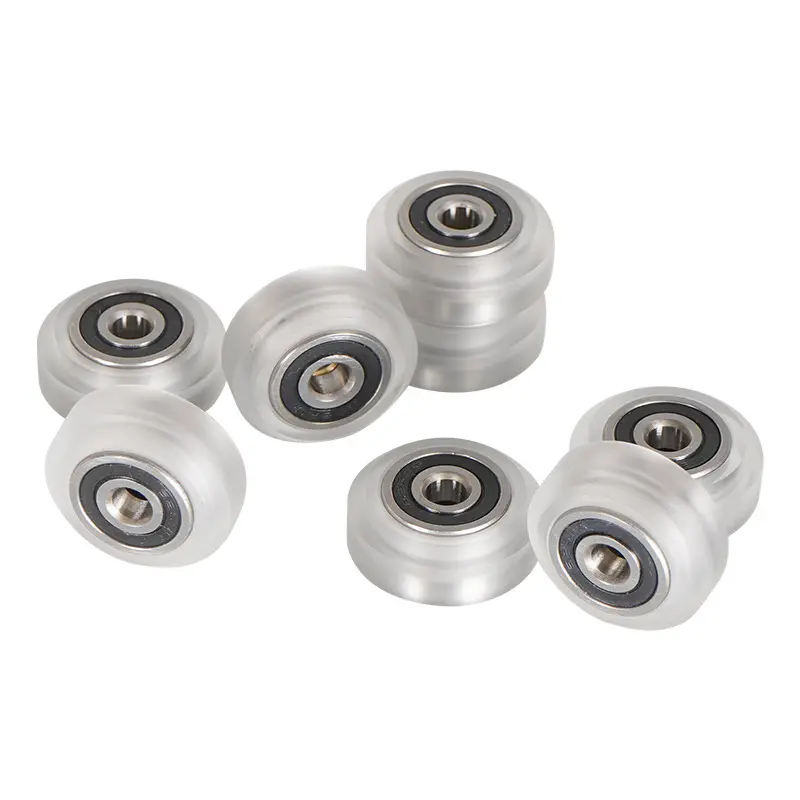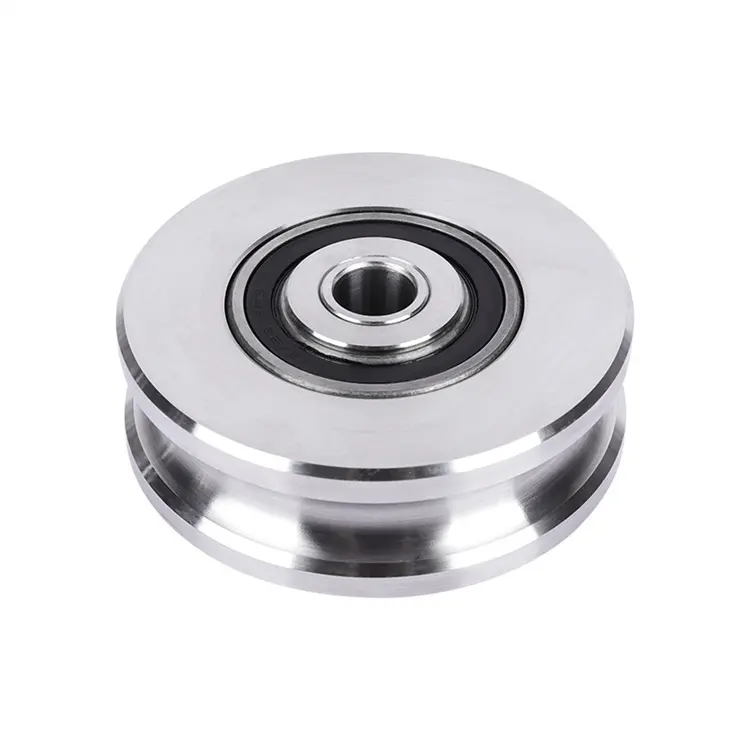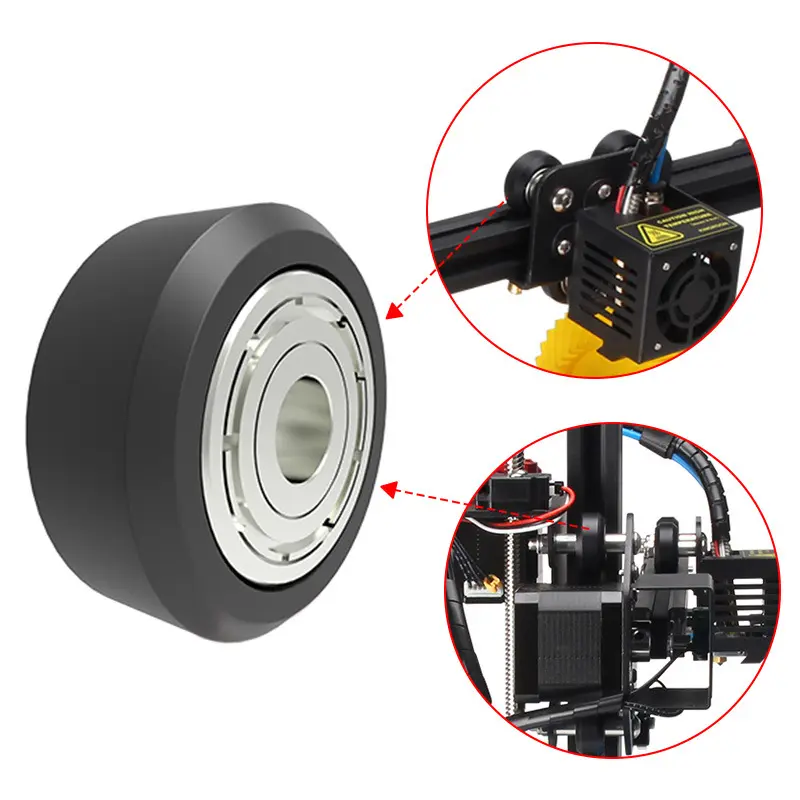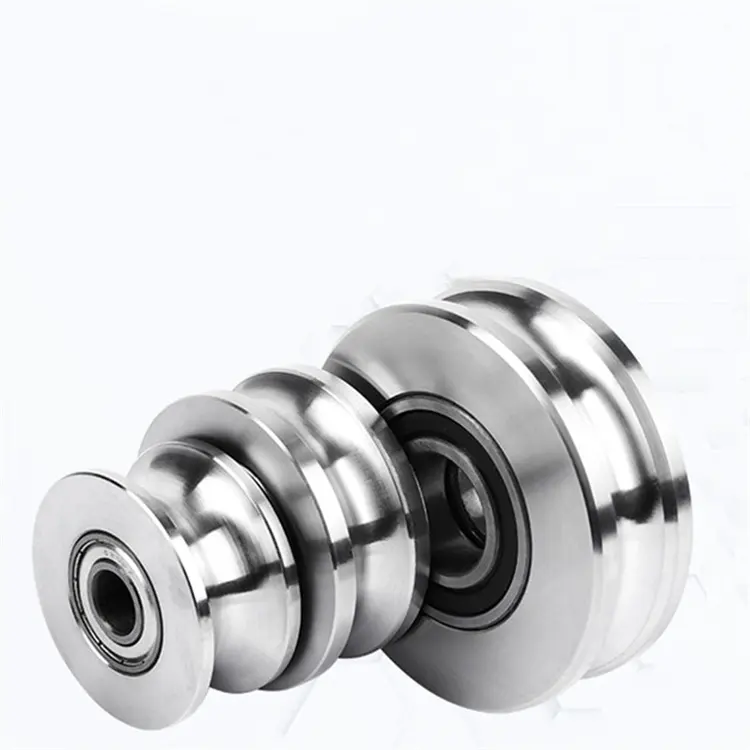Product Description
1. Product Description:
Model No.: Single swivel pulley, fixed ring pulley, double fixed/ swivel pulley ,
E.Galvanized, Nickel plate
Material:Zinc Alloy , carbon steel
Surface: Galvanized, Nickel plated, stainless steel 316, stainless steel 304
Packing: gunny bag /carton+ iron pallet/wooden pallet
2.Quality Assurance
Manufacture & Export : We are professional Manufacturer & Exporter of kinds of
shackles over 30 years.
Specilizing in Manufacturing : Single/ double swivel or fixed pulley .
Mainly export to : European countries, USA, Canada, Australia, Japan, Korea,
Singapore and so on.
Capacity :We have our own factory and we can control every step ourseves .
3.Service Assurance
Free Samples for provided if needed .
Accepting Designated Inspections if needed .
All enquiry can be reply in 4 hours .
Waiting for our pleasure cooperations.
| Pulley: | 5/16"-2-3/4" |
|---|---|
| Transport Package: | Cartons + Pallet, Gunny Bag + Pallet or Others |
| Specification: | CE, CCS, BV, SGS and so on |
| Samples: |
US$ 20/Piece
1 Piece(Min.Order) | Order Sample |
|---|
| Customization: |
Available
| Customized Request |
|---|
.shipping-cost-tm .tm-status-off{background: none;padding:0;color: #1470cc}
| Shipping Cost:
Estimated freight per unit. |
about shipping cost and estimated delivery time. |
|---|
| Payment Method: |
|
|---|---|
|
Initial Payment Full Payment |
| Currency: | US$ |
|---|
| Return&refunds: | You can apply for a refund up to 30 days after receipt of the products. |
|---|

What safety considerations should be kept in mind when working with fixed pulleys?
Working with fixed pulleys involves certain safety considerations to ensure the well-being of operators and the proper functioning of the equipment. Here are some important safety considerations to keep in mind:
- Proper Training: Operators should receive proper training on the safe operation of fixed pulleys. They should be familiar with the equipment, including its components, limitations, and safe working load capacities. Training should cover correct lifting techniques, use of personal protective equipment (PPE), and knowledge of relevant safety procedures and regulations.
- Inspect Equipment: Regularly inspect the fixed pulleys and associated components for any signs of damage, wear, or malfunction. Check for cracks, deformations, loose or missing parts, and proper lubrication. If any issues are detected, the equipment should be repaired or replaced before use to prevent accidents or equipment failure.
- Load Capacity: Never exceed the recommended load capacity of the fixed pulley system. Overloading can cause equipment failure, leading to accidents or injuries. Ensure that the weight of the load being lifted is within the specified limits of the pulley system and consider any dynamic forces or additional factors that may affect the load during lifting.
- Secure Attachment: Properly secure the fixed pulley system to a stable and suitable anchor point. Ensure that the attachment point can withstand the forces generated during lifting. Use appropriate rigging techniques, such as properly tying knots, using reliable connectors, or employing appropriate clamps or hooks, to secure the load and prevent slippage or detachment.
- Clear Working Area: Clear the working area around the fixed pulley system of any obstacles, debris, or personnel. Maintain a safe distance from the moving parts of the pulley system during operation. Ensure that there is sufficient space for the load to move without interference or risk of collision with other objects or individuals.
- Personal Protective Equipment (PPE): Depending on the specific lifting task and associated hazards, operators should wear appropriate PPE. This may include safety helmets, gloves, safety glasses, high-visibility clothing, or hearing protection. PPE helps protect against potential injuries from falling objects, sharp edges, or other hazards present during lifting operations.
- Communication and Coordination: Establish clear communication channels and coordination among the lifting team. Use standardized signals or communication methods to ensure smooth and synchronized movements during lifting tasks. Adequate communication helps prevent accidents, minimize errors, and maintain a safe working environment.
- Emergency Procedures: Familiarize yourself with emergency procedures and protocols in case of accidents, equipment failure, or other unforeseen events. Ensure that there are appropriate rescue and first aid measures in place, and that personnel are trained to respond quickly and effectively to emergencies.
It is crucial to prioritize safety when working with fixed pulleys. Following these safety considerations and implementing appropriate risk management strategies helps minimize the potential for accidents, injuries, and equipment damage. Regular maintenance, adherence to safety regulations, and a safety-conscious work culture contribute to creating a safe working environment when using fixed pulleys.

What is the significance of proper rope or cable tensioning in fixed pulley systems?
Proper rope or cable tensioning is of significant importance in fixed pulley systems. Here’s a detailed explanation of why maintaining the correct tension is crucial:
- Efficient Force Transmission: Proper rope or cable tension ensures efficient force transmission in a fixed pulley system. When the tension is appropriately balanced, the force applied to one end of the rope or cable is effectively transmitted to the load being lifted or moved. Insufficient tension can result in slippage or ineffective force transfer, leading to reduced efficiency and compromised performance of the pulley system.
- Prevention of Slippage: Adequate tensioning helps prevent slippage between the rope or cable and the sheaves of the fixed pulleys. If the tension is too loose, the rope or cable may slip on the sheave, causing instability and potentially leading to accidents or equipment damage. Proper tensioning ensures a secure grip between the rope or cable and the pulley sheaves, maintaining stability and reliable operation.
- Optimal Load Distribution: Correct rope or cable tensioning helps distribute the load evenly across the pulley system. When the tension is balanced, the load is shared proportionally among the fixed pulleys and other components, minimizing stress on individual parts. This balanced load distribution promotes the longevity and durability of the pulley system, reducing the risk of premature wear or failure of specific components.
- Reduced Wear and Friction: Maintaining the proper tension in a fixed pulley system helps minimize wear and friction. Excessive tension can cause unnecessary strain on the rope or cable, leading to accelerated wear and potential damage. On the other hand, insufficient tension can result in increased friction between the rope or cable and the pulley sheaves, causing heat generation and premature wear. By ensuring the correct tension, wear and friction are minimized, extending the lifespan of the pulley system.
- Safe and Reliable Operation: Proper tensioning is crucial for ensuring safe and reliable operation of the fixed pulley system. Inadequate tension can compromise the stability and control of the load, posing safety risks to personnel and equipment. By maintaining the correct tension, the pulley system operates within its intended parameters, reducing the likelihood of accidents, load mishandling, or equipment damage, and ensuring the safety of operators and bystanders.
- Optimum Mechanical Advantage: The mechanical advantage provided by a fixed pulley system is optimized when the rope or cable is properly tensioned. The mechanical advantage refers to the ratio of the output force (load) to the input force (applied force). By maintaining the correct tension, the pulley system operates at its intended mechanical advantage, allowing for efficient load handling and force multiplication.
Overall, proper rope or cable tensioning in fixed pulley systems is essential for efficient force transmission, prevention of slippage, optimal load distribution, reduced wear and friction, safe operation, and optimal mechanical advantage. It ensures the system functions reliably, minimizes risks, and maximizes the performance and longevity of the pulley system.

In which industries and applications are fixed pulleys commonly used?
Fixed pulleys find widespread use in various industries and applications due to their simplicity and effectiveness in changing the direction of forces. Here’s a detailed explanation of the industries and applications where fixed pulleys are commonly used:
- Construction: In the construction industry, fixed pulleys are employed for lifting and lowering heavy loads. They are often utilized in conjunction with other pulleys in block and tackle systems to create mechanical advantage and facilitate the movement of construction materials.
- Manufacturing: Fixed pulleys are frequently used in manufacturing processes that involve lifting, tensioning, or guiding loads. They can be found in assembly lines, material handling systems, and conveyor systems, where they contribute to the efficient movement of goods and materials.
- Transportation and Logistics: Within transportation and logistics operations, fixed pulleys play a role in cargo handling and load securing. They are used to change the direction of forces when loading or unloading cargo onto vehicles, ships, or aircraft. Fixed pulleys help facilitate smooth and controlled movement of goods during transportation.
- Agriculture: In the agricultural sector, fixed pulleys are employed in various applications such as hoisting equipment, lifting bales of hay, or moving heavy farm machinery. They assist in managing the weight and movement of agricultural products and equipment.
- Marine and Offshore: Fixed pulleys have applications in marine and offshore industries. They are utilized on ships, oil rigs, and offshore platforms for tasks such as lifting equipment, handling supplies, and deploying or recovering heavy objects from the water.
- Utilities and Power Generation: Fixed pulleys are used in utilities and power generation sectors for tasks like hoisting equipment, lifting heavy components, and facilitating maintenance operations. They contribute to the safe and efficient handling of equipment in power plants, substations, and utility infrastructure.
- Entertainment and Rigging: In the entertainment industry, fixed pulleys are employed in rigging systems for stage productions, concerts, and events. They assist in lifting and suspending equipment, scenery, and lighting fixtures, enabling dynamic and controlled movements during performances.
- Home and DIY: Fixed pulleys can also be found in various home and do-it-yourself (DIY) applications. They are used for tasks such as lifting heavy objects, tensioning ropes or cables, or creating simple mechanical advantage systems for home projects.
These are just a few examples of the industries and applications where fixed pulleys are commonly used. Their versatility, ease of use, and ability to change the direction of forces make them valuable tools in a wide range of sectors.


editor by CX
2023-12-04



